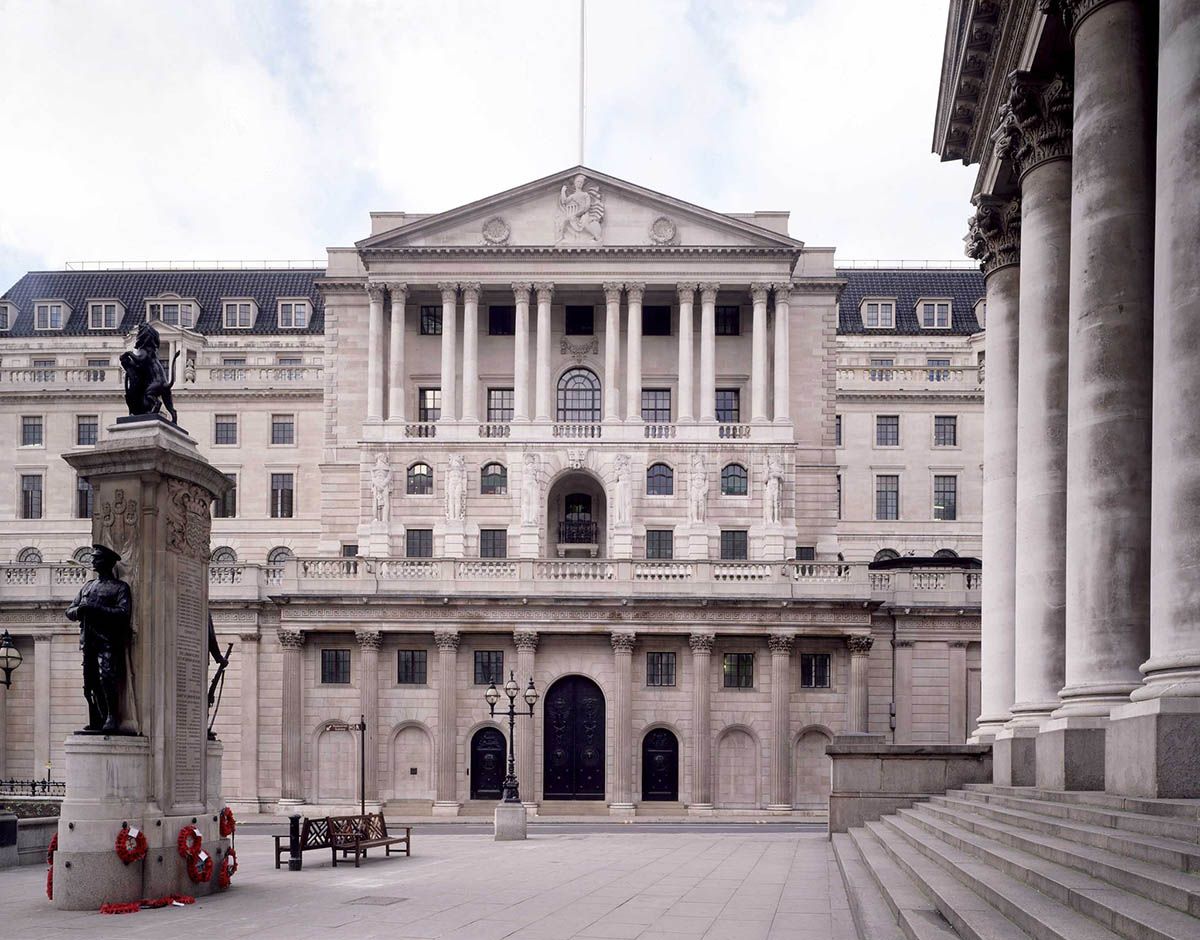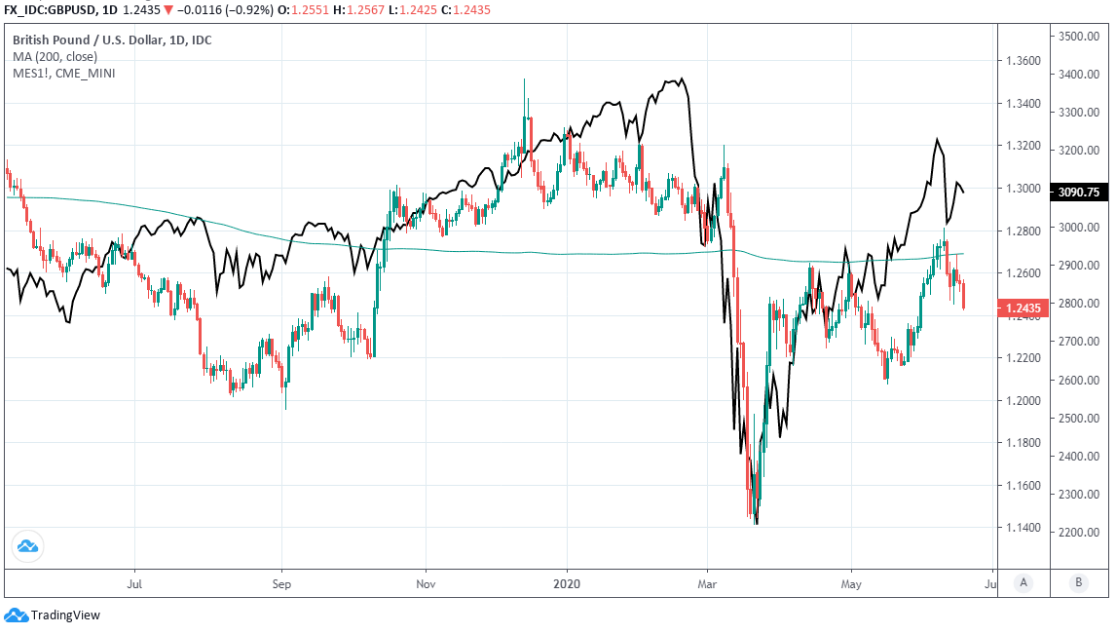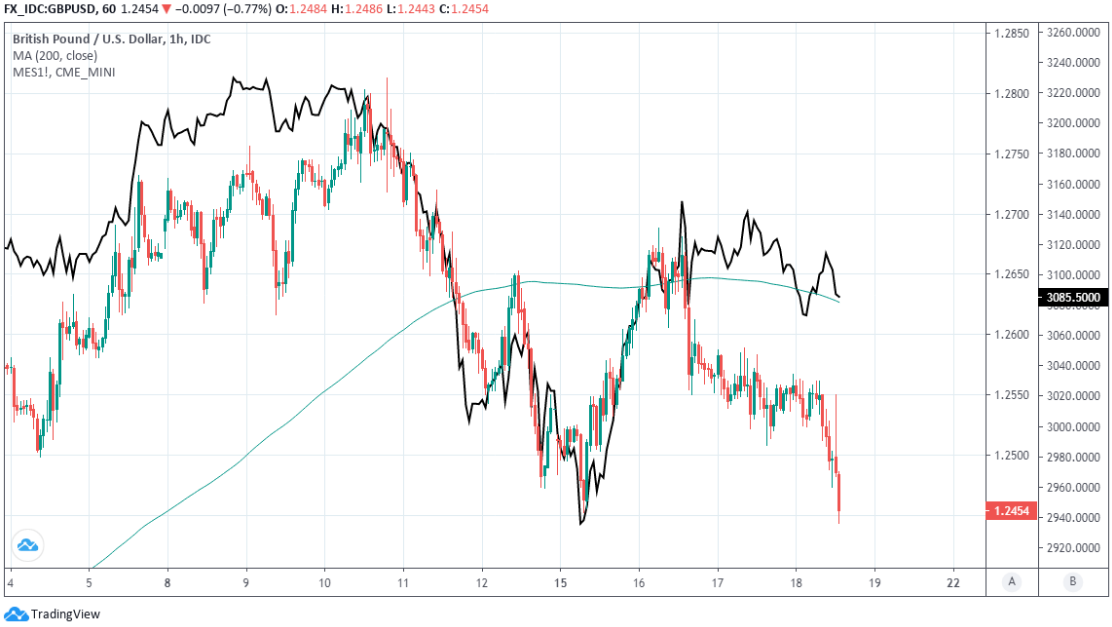Pound-Dollar Rate Volatile after Bank of England Says to Buy More Bonds, but at Slower Pace
- Written by: James Skinner
- GBP volatile after BoE adds £100bn more QE but slows purchases.
- Cuts weekly bond buys in half nearly, stays mum on negative rates.
- Says coronavirus economic hit to be less than was previously feared.
- Removes material weight from ankles of GBP as EU meeting looms.

© Bank of England
Achieve up to 3-5% more currency for your money transfers. Beat your bank's rate by using a specialist FX provider: find out how.
The Pound-to-Dollar rate was volatile Thursday after the Bank of England (BoE) told markets it intends to slow the pace at which it buys an increased stock of British government bonds using newly created money over the coming months.
Sterling rallied after policymakers voted by split decision to increase the Bank of England quantitative easing target by a further £100 bn on Thursday, taking the total to £745bn when government and corporate bond purchases are all lumped in together, although that outcome was widely expected by the market.
"The essence of today’s MPC is that although the initial shock to the economy is currently looking to be not as bad as expected, it’s far too early for any victory laps for policymakers, as we have little idea what shape the recovery will take," says Ranko Berich, head of market analysis at Monex Europe.
Quantitative easing describes the acuqisition of bonds using newly created money and is usually done to enhance the supposed economic medicine of lower interest rates by crushing the yields that represent real time borrowing costs for governments and some business.
But this year's QE has been less about stimulating demand and more about ensuring the "smooth functioning" of a government bond market that would be swamped by new coronavirus-related issuance if not for the BoE stepping in to soak it up on a supposedly temporary basis.
It goes almost without saying that the BoE left Bank Rate unchanged at its new all-time low of 0.10%, in line with expectations, although investors were less prepared for guidance suggesting "that programme to be completed and the total stock of asset purchases to reach £745bn around the turn of year."
Above: Pound-to-Dollar rate shown at hourly intervals with 200-period moving average and S&P 500 futures (black line).
"This implies that the Bank thinks it has done enough for now," says Thomas Pugh at Capital Economics. "While we wouldn’t rule out the Bank of England cutting interest rates into negative territory, we aren’t expecting it to. Instead, we think the Bank will eventually announce a further £250bn of QE over the course of the next year or so, much more than the consensus expects."
Guidance implies a sharp slowdown from the current pace of purchase, which had seen the BoE burn through £150bn between March 19 and June 10 when total purchases of government bonds reached £583.4 bn, out of a total allocation of £634bn. It also implies slower new money creation and a lesser dilution of Sterling's value than was seen as likely before the announcement.
This means that for the time being at least, the BoE may have neutered the risk of the Pound emerging from the crisis as the most diluted of major currencies, although it's still not far off. Only the Federal Reserve and European Central Bank have outdone the BoE at the printing presses.
"We wouldn't completely rule out a close today below daily trend line support in the 1.2450 area; but we think that would take the combination of an exceptionally dovish BoE and strong US economic data this afternoon. And even then, we would not argue that the case for piling into GBPUSD shorts is the correct strategy right now," says Stephen Gallo, European head of FX strategy at BMO Capital Markets.

Above: Pound-to-Dollar rate shown at daily intervals with 200-day moving average and S&P 500 futures (black line).
Sterling may also have drawn further support Thursday from the fact the BoE stayed mum on the subject of negative interest rates, the merits of which had been contemplated aloud and in public speeches by a number of bank policymakers and staff in recent weeks. A negative rate policy was never actually on the cards for the June meeting but some analysts and investors had feared the bank would try to keep the discussion about one alive.
The Pound was volatile in the aftermath of the announcement having traded as high as 1.2550 and as low as 1.2450, while analysts are divided on the outlook. Some forecast that fresh losses will take it as far back as 1.23 in the coming weeks while others see renewed gains taking Sterling back toward 1.28, which is effectively June's range for the Pound-to-Dollar rate. Sterling's gains were unwound in the noon sesson as risk assets including stocks turned lower, while the greenback stabilised.
Thursday's decision and price action comes ahead of Friday's European Council meeting from which there is scope for a decision on whether to alter the mandate of Brexit negotiator Michel Barnier, which would likely be well received by the Pound if it's seen greasing the path toward a compromise that averts a 'no deal' Brexit' at the year-end expiry of the transition period.
"Flexibility on the EU’s side will give the UK what it wants," says Jordan Rochester, a strategist at Nomura. "It looks to me that Boris is genuinely keen to get a deal - at nearly any cost - as long as it gives him political cover. If he is able to convince MPs and the public like he did with his “oven ready deal” nonsense last year into the election he’ll take it. It may be that the UK agrees to Level Playing field as long as it has some wiggle room and doesn’t answer to the ECJ (some mixed representation arbitration panel instead)."





